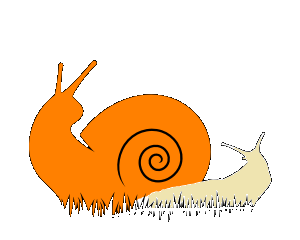Everything you should know about lungworm in pets
Lungworm is a serious and potentially fatal parasite that can affect both dogs and cats. Understanding these parasites, their life cycles, and how to protect your beloved pet is crucial for every pet owner.
What is lungworm?
Lungworm is a parasitic worm which can be seriously damaging to dogs or cats if left untreated. Different to intestinal worms, lungworms migrate through your pet's body into the lungs and heart when they are in their larval stage. This can lead to haemorrhages in the lungs, liver, intestine, eyes and spinal cord and at its worst, it can even be fatal.
Dogs and cats are usually infected by different types of lungworm:
- Dogs
The most common lungworm in dogs is Angiostrongylus vasorum, which lives in the heart and the major arteries that supply blood to the lungs.
- Cats
The most common lungworm in cats is Aelurostrongylus abstrusus which lives within the small airways and lung tissues of the cat.
How do pets become infected with lungworm?
Dogs and cats don't directly infect each other with lungworm but rather pick up infective stages of the lungworm - usually through one of the intermediate hosts that are involved in the lungworm life cycle.
Lungworm larvae that have been pooped out by an infected dog or cat are then picked up by slugs or snails as they pass over the faeces. In the slug or snail the parasite develops into juvenile larvae, known as ‘third-stage’ infective larvae.
The infection can be passed to dogs or cats when they:
 Eat infected slugs or snails
Eat infected slugs or snailsThis is the most common way that dogs become infected, as they can eat a slug or snail while rooting around on their daily adventures
 Eat other animals that have eaten infected snails
Eat other animals that have eaten infected snailsThis is the most common way that cats will become infected as they can eat rodents or birds that have eaten infected slugs or snails
When the lungworm larvae has been swallowed, they migrate out of the intestines through the body to the heart, blood vessels or the lungs. Once here, the larvae develop into adult worms before laying eggs which then develop into larvae. The larvae are then coughed up and swallowed before being passed in the faeces.
Lungworms can live and develop undetected sometimes because the dogs and cats may not show signs until the infection is in its later stages.
What are the signs of lungworm?
Lungworm symptoms vary and may even go undetected as they can mimic other conditions.
Symptoms in dogs include:

- lethargy or changes in energy levels – your dog may lose interest in playtime, be disengaged from things they usually love or tire more easily
- difficulty breathing or a persistent cough
- unexplained bruising and bleeding
- problems with blood clotting - this can include excessive bleeding from minor wounds, nose bleeds, bleeding into the eye and bloody urine/stools
- changes in behaviour, back pain or seizures/fits
- vomiting, diarrhoea, weight loss and loss of interest in food
Symptoms in cats include:

- a mild to moderate chronic cough
- sneezing
- shortness of breath, wheezing, or difficulty breathing
- lethargy or reluctance to exercise
- weight loss
- nasal discharge
These symptoms are often mild in adult cats, but can be more serious in kittens, cats with compromised immune systems or senior cats.
If your pet shows any of these symptoms, contact your vet without delay. Speak to your vet about regular prevention of lungworm.
How does a vet diagnose lungworm?
As the symptoms of lungworm are similar to other health conditions, your vet will carry out a number of tests to find out if your pet has lungworm. These might include:
- Physical examination - Your vet will listen to your pet’s chest to check how they’re breathing and any sounds being produced by the lungs.
- Faecal analysis: the most common way to confirm a lungworm infection is to test the dog or cat’s faeces for lungworm larvae. However, this isn’t always straight-forward because it can take more than a month for the parasite to show up in the faeces, so multiple tests may be required.
- Blood Tests: For dogs, specific blood tests can detect antigens or antibodies related to Angiostrongylus vasorum.
- Imaging: Chest X-rays may reveal characteristic changes in the lungs.
How is lungworm treated?
If your pet is diagnosed with lungworm, your vet will recommend the best treatment for them. This can include a lungworm wormer; not all routine worming products will treat for lungworm, so it’s best to speak with your vet to find the best treatment option.
How can you protect your pet from lungworm?
Consistent, year-round prevention is the most effective way to protect your pet from lungworm.
- Preventative products
Discuss appropriate preventative products with your vet as not all routine worming treatments are effective against lungworm
 Pick up the poo!
Pick up the poo!Promptly collect and dispose of pet faeces to help break the parasite's life cycle and reduce environmental contamination.
 Environmental control
Environmental controlDiscourage dogs from eating slugs and snails and cats from hunting birds and rodents that tend to eat slugs and snails
By understanding the risks and using these preventative measures, you can significantly reduce your pet's exposure to lungworm. Always consult your vet for tailored advice on your pet's health and preventative care.

